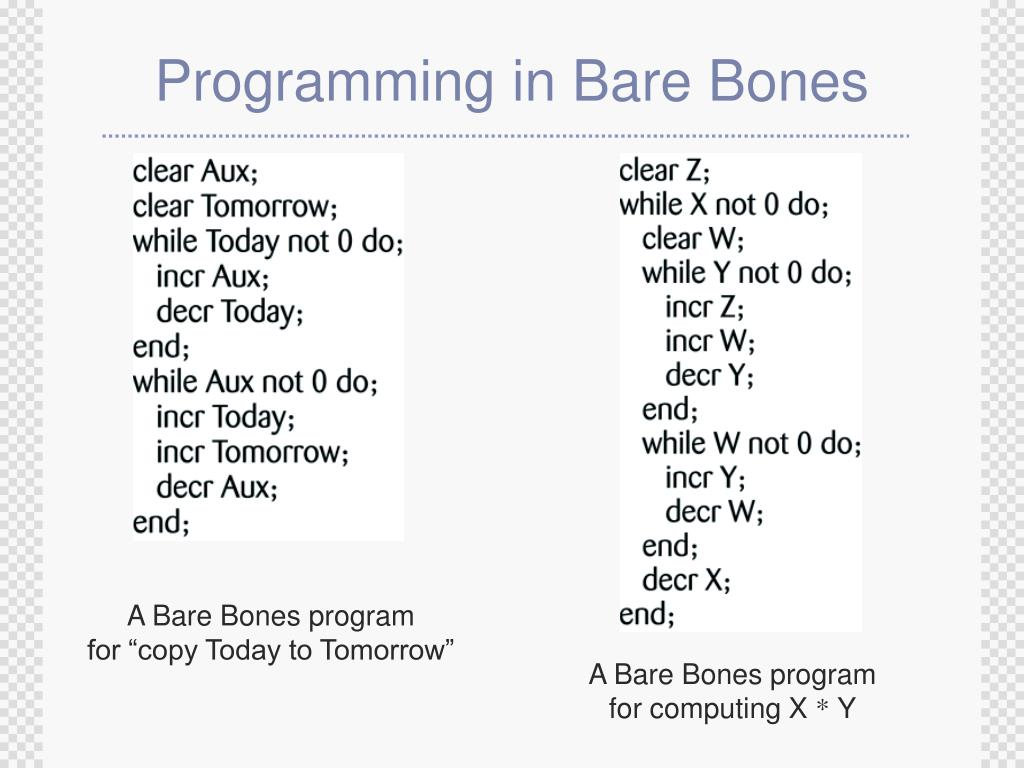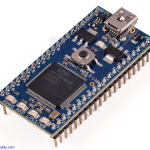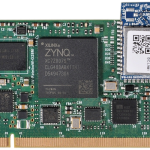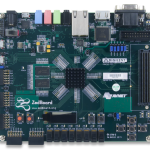Bare-bones game programming invites enthusiasts to explore the raw essence of game development by stripping away the complexities of modern systems. This minimalist approach emphasizes direct interaction with hardware, often using C programming for games, which allows developers to create efficient and streamlined code. Harnessing only the fundamental components like microcontrollers, developers can design projects reminiscent of classic games, such as a Tetris clone programming endeavor that showcases simplicity and creativity. With a focus on game graphics development, programmers delve into creating graphics from scratch, often relying on their artistic skills or AI-generated assets. This hands-on experience not only deepens understanding but also cultivates a profound appreciation for the intricacies involved in crafting games from the ground up.
In the world of simple game creation, a minimalist development philosophy enables coders to engage deeply with each facet of interactive entertainment. This approach, often seen in basic programming tutorials, focuses on leveraging platform-independent code and direct hardware manipulation. Such techniques make the realm of creating retro-style games accessible and achievable, even with limited resources. Many developers find joy in creating their own versions of classic titles, employing straightforward programming techniques to ensure optimal performance on low-powered devices. By embracing a simplified coding environment, individuals can learn the foundations of game mechanics and graphics while exploring the boundaries of their creativity.
The Fundamentals of Bare-Bones Game Programming
Bare-bones game programming is an approach that emphasizes simplicity and efficiency in game development. It involves creating games with the least amount of overhead possible, often coding directly in low-level languages such as C. This method allows developers to gain a deeper understanding of the hardware they are working with, particularly when developing for microcontrollers like the ARM Cortex-M7. By eschewing complex libraries and frameworks, developers can create more optimized and lightweight applications that run effectively within the constraints of the hardware.
For those looking to dive into bare-bones game programming, a great starting point is to understand the fundamental components of a game. This includes graphics rendering, audio management, and input handling, all of which can be managed with a minimalistic approach. By using direct pixel manipulation for graphics and simple sound wave generation for audio, developers can achieve a surprising level of functionality with a small codebase. These principles can be observed in projects like Michal Zalewski’s Tetris clone, which showcases the possibilities of game development without heavy reliance on existing tools.
Minimalist Game Development Techniques
Minimalist game development focuses on the ethos of doing more with less, emphasizing core gameplay mechanics over visual extravagance. This method encourages developers to strip down their games to the essential elements that provide the most engaging player experience. For instance, in minimalist concepts, gameplay is prioritized, and unnecessary graphics or features are removed, which can lead to a more cohesive and compelling gaming experience. Embracing a minimalist philosophy can be especially beneficial when working on small-scale projects or prototypes, where speed and simplicity are essential.
Many successful indie games have employed minimalist strategies, often resulting in unique and memorable gameplay experiences that resonate well with players. The classic game Tetris exemplifies this approach, as its simple rules and mechanics quickly led to widespread popularity. In minimalist game development, the focus on effective design encourages developers to think creatively within their limitations, often resulting in innovative mechanics or storytelling techniques that stand out in the crowded gaming market.
Programming a Tetris Clone in C
Creating a Tetris clone in C is an excellent way to understand foundational programming concepts in game development. This project allows developers to explore the mechanics of game physics and collision detection while honing their skills in a structured coding environment. The simplicity of Tetris makes it an accessible challenge for those new to game programming, while still offering depth in terms of coding practices and problem-solving. Implementing this game requires an understanding of graphics rendering, input handling, and game loops—all fundamental concepts that can be applied to more complex projects.
Moreover, working with pure C code to develop a Tetris clone highlights the importance of managing memory and resources effectively. Since developers are often constrained by the limits of microcontroller hardware, this project reinforces skills such as bitmap manipulation, sprite management, and optimizing algorithms. As Michal Zalewski demonstrated, even with just 1000 lines of code, developers can create a functional and visually appealing game. This exercise not only encourages efficiency but also cultivates a robust foundation for further exploration in game development and programming.
Game Graphics Development with Minimal Resources
When developing game graphics on limited resources, efficiency is key. Using low-level C programming techniques, developers can create engaging visual experiences without relying on complex graphics libraries. The graphics in minimalist games can be constructed using simple bitmaps and sprites that are manipulated directly in memory. For instance, the ARM Cortex-M7 microcontroller can handle straightforward graphics tasks, allowing developers to render their scenes effectively by optimizing each line of code to perform specific tasks swiftly.
Furthermore, by embracing constraints in hardware, developers can explore creative ways to enhance graphics through design choices and visual style. Hand-drawn graphics or generative art techniques can create unique aesthetic outcomes, even with limited processing power. This approach not only strengthens the graphical fidelity of games but also encourages artistic expression. The result is often a distinctive style that may not rely on the latest graphical capabilities, but instead leverages simplicity and creativity to captivate players.
Working with Microcontrollers in Game Development
Microcontrollers provide an intriguing platform for developing simple yet effective games, particularly for those interested in hardware interaction. Programming games on devices like the ARM Cortex-M7 can lead to innovative developments in game mechanics and graphics with minimal resources. Writing code that interfaces directly with the hardware allows developers to gain insights into how games communicate with peripherals like screens and controllers. This direct connection fosters an understanding of the low-level operations that occur in larger systems, thereby improving overall programming competency.
Additionally, developing games on microcontrollers often means working within tightly constrained environments, which challenges developers to be resourceful and efficient. Utilizing essential programming concepts such as interrupt handlers, timers, and direct memory access can enhance the performance of a game significantly. This experience can be rewarding as it not only sharpens coding skills but also provides the satisfaction of successfully running a game on simple hardware, potentially leading to the development of truly unique gaming experiences.
The Role of C Programming in Game Development
C programming has been foundational to game development for decades, providing developers with the control and efficiency needed to create high-performance games. Its low-level capabilities allow for precise manipulation of hardware resources, making it an ideal choice for embedded systems and performance-critical applications. Game mechanics and graphics processing can be optimized extensively in C, leading to faster execution and smoother gameplay—a key factor for engaging players who expect real-time responsiveness.
Moreover, the widespread use of C in the industry ensures that a vast array of resources, libraries, and community support is available to developers. This language allows programmers to create cross-platform games, making it a versatile option for teams looking to broaden their audience. The experience of coding in C not only empowers developers to understand how their games interact with the hardware but also prepares them for exploring modern game development technologies and frameworks.
Exploring Game Mechanics Through Minimalistic Design
Exploring game mechanics through minimalistic design encourages developers to focus on the core interaction and experience provided to players. By reducing complexity, developers can emphasize the fundamental aspects of gameplay that make a game engaging. This approach not only helps streamline development processes but also instills a sense of clarity in design choices. Often, the most captivating games arise from simple concepts that players can easily understand and engage with, allowing for broader accessibility and enjoyment.
In minimalist design, designers can experiment with different mechanics without the burden of elaborate visual details or complex systems. This freedom allows for creative risks that can lead to innovative gaming experiences. As demonstrated by the development of a Tetris clone in pure C, focusing on core mechanics can yield impressive results on minimal hardware, showcasing that fun and engaging gameplay does not require excessive complexity.
Understanding Latent Semantic Indexing (LSI) in Game Development
Understanding Latent Semantic Indexing (LSI) can greatly enhance the effectiveness of content creation within game development. LSI allows developers to identify and optimize keywords related to their projects, increasing the visibility and searchability of their work on various platforms. By incorporating relevant LSI keywords such as ‘minimalist game development’ or ‘C programming for games’, developers can better position their games and resources in competitive markets.
Additionally, LSI highlights related concepts that can be beneficial to game developers looking to expand their knowledge base or enhance their game’s appeal. By understanding related terms such as ‘game graphics development’ and ‘Tetris clone programming’, developers can refine their game mechanics and visuals, ultimately improving the overall experience. Optimizing for LSI not only attracts a wider audience but also connects developers with trends and innovations within the industry.
The Importance of Documentation in Game Programming
Documentation in game programming serves as a critical tool for both developers and users, ensuring clarity and continuity in game development projects. As seen with Michal Zalewski’s Tetris clone, comprehensive documentation allows other programmers to understand the code, the design choices made, and the underlying architecture of the game. Good documentation fosters collaboration and opens opportunities for learning, as it enables others to build upon existing work effectively.
Moreover, writing clear documentation helps developers reinforce their understanding of the programming principles involved. By articulating their thought processes and solutions to challenges, developers can improve their coding skills and design insights. Documentation becomes especially important in minimalist game development where each line of code holds significant value, supporting not only individual reflection but also a shared knowledge base within the developer community.
Frequently Asked Questions
What is bare-bones game programming and how does it differ from minimalist game development?
Bare-bones game programming refers to the practice of creating games using only the essential components, often without relying on external libraries or complex frameworks. This approach contrasts with minimalist game development, which aims to streamline game creation by focusing on simple mechanics and aesthetics but may still utilize existing libraries to a degree. Bare-bones programming emphasizes understanding the underlying systems, as seen in minimalist projects like a Tetris clone built in pure C.
How can I get started with C programming for games in a bare-bones style?
To begin C programming for games in a bare-bones style, start by learning the fundamentals of C, focusing on graphics programming, memory management, and input handling. Utilize platforms like ARM Cortex-M7 microcontrollers to truly grasp low-level programming techniques. Create simple games such as Tetris clones, where you can practice basic graphics drawing without using any third-party libraries.
What are the key challenges in Tetris clone programming using bare-bones techniques?
Key challenges in Tetris clone programming using bare-bones techniques include managing input accurately, ensuring smooth graphics rendering without advanced libraries, and optimizing code for performance on limited hardware. Additionally, handling game mechanics like line clearing and block movement requires careful coding to ensure responsiveness and a seamless gameplay experience.
What should I know about game graphics development in a bare-bones context?
In a bare-bones context, game graphics development involves creating images, sprites, and animations using minimal resources. Focus on understanding pixel manipulation, data structures for graphics representation, and efficient memory usage. You might create graphics as plain bitmaps and write custom routines to draw them on displays, achieving sufficient performance without heavy frameworks.
How can working with microcontrollers enhance my bare-bones game programming skills?
Working with microcontrollers allows you to get close to the hardware, giving you a deeper understanding of how games operate at the most fundamental level. It challenges you to optimize your coding practices, manage memory effectively, and improve your troubleshooting skills since you’ll often need to work without the safety nets provided by higher-level programming environments.
Are there any advantages to avoiding third-party libraries in bare-bones game programming?
Avoiding third-party libraries in bare-bones game programming encourages a deeper understanding of game mechanics, graphics, and hardware interactions. It allows for greater optimization, as you can tailor your code specifically for your needs. This approach also fosters creativity since you’re not limited by the constraints of existing libraries, enabling you to innovate and build customized solutions.
How can I document my bare-bones game programming projects effectively?
Effective documentation of bare-bones game programming projects should include clear explanations of your code, detailing the purpose of functions and algorithms used. Include comments within your code, and maintain a project log to track challenges and solutions encountered along the way. Providing a comprehensive guide or blog post about your development process can also help others learn from your experiences.
What techniques can improve performance in minimalist game development?
To improve performance in minimalist game development, employ techniques such as limiting the use of complex algorithms, optimizing resource loading, and reducing the graphical footprint. Efficient memory management is crucial, alongside utilizing algorithms that reduce computational load. Profiling your code can help identify bottlenecks and guide you toward necessary optimizations.
Can I create a fully functional game using bare-bones game programming principles?
Yes, it is possible to create a fully functional game using bare-bones game programming principles. Many developers have successfully built games with rich graphics and gameplay experiences while using minimal code and resources. The key is to focus on essential functionality, optimizing every line of code, and utilizing hardware effectively.
What resources are available for learning bare-bones game programming?
Resources for learning bare-bones game programming include online tutorials focused on C and hardware programming, forums dedicated to microcontroller projects, and documentation from other programmers’ minimalist projects. Books on game development that emphasize low-level coding practices and blades of open-source game engines can provide valuable insights and examples.
| Key Point | Details |
|---|---|
| Use of Existing Tools | Modern programming relies heavily on operating systems, standard libraries, and third-party libraries. |
| Inventing New Wheels | Developers can explore programming fundamentals by creating their own solutions, as demonstrated by Michal Zalewski. |
| Example of Minimalist Game | Michal created a Tetris clone using a simple setup: ARM Cortex-M7, LCD screen, and very minimal code. |
| Code Efficiency | The game’s graphics manipulation takes only 150 lines, and core game mechanics are about 250 lines. |
| Sound Implementation | Simple sound is created using 50 lines of code for square-wave chiptunes. |
| Keypress Handling Challenges | Michal faced challenges like interpreting keypresses and solved it with specific timing. |
| Expertise in Bare-Bones Programming | Michal is known for pushing microcontrollers to their limits in bare-bones game programming. |
| Risks of Dependency | Over-reliance on third-party libraries may complicate understanding of programming fundamentals. |
Summary
Bare-bones game programming is an approach that emphasizes creating games with minimal resources and tools. This method showcases the potential of programming fundamentals by demonstrating that complex games can be built without heavy reliance on third-party libraries. As highlighted by Michal Zalewski’s Tetris clone, using basic hardware and efficient coding practices allows developers to grasp the intricate workings of game development while encouraging innovation. Understanding these principles can lead to both a stronger foundation in programming and the ability to create unique solutions in a field teeming with pre-existing options.






